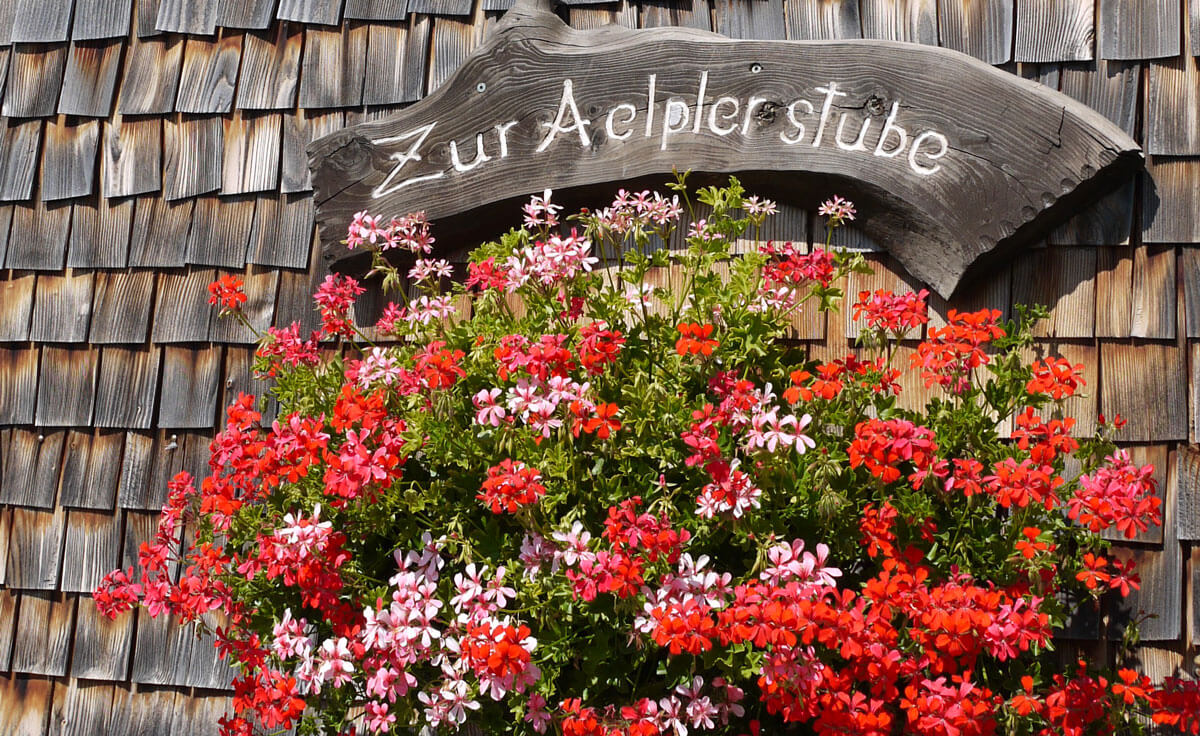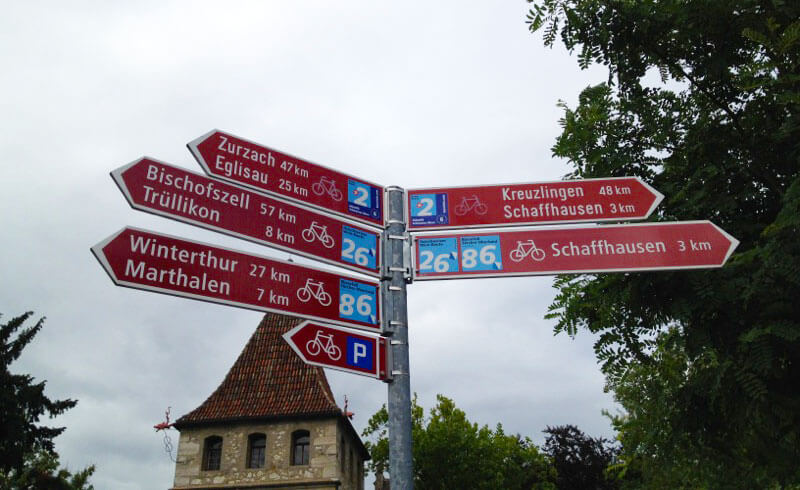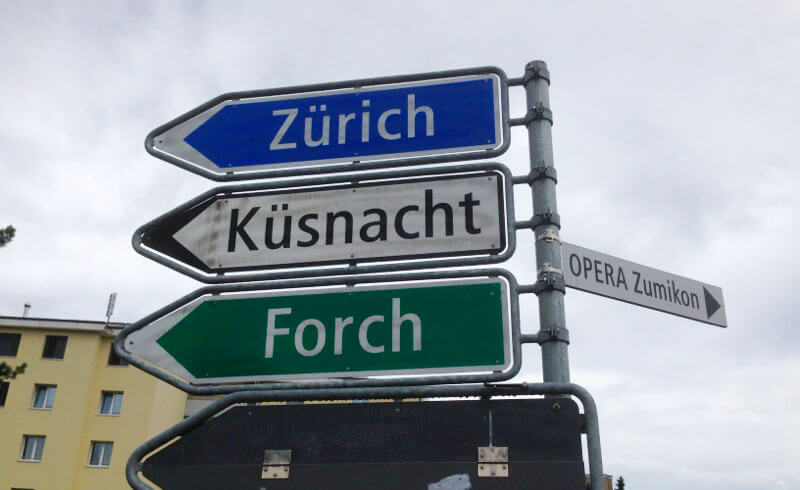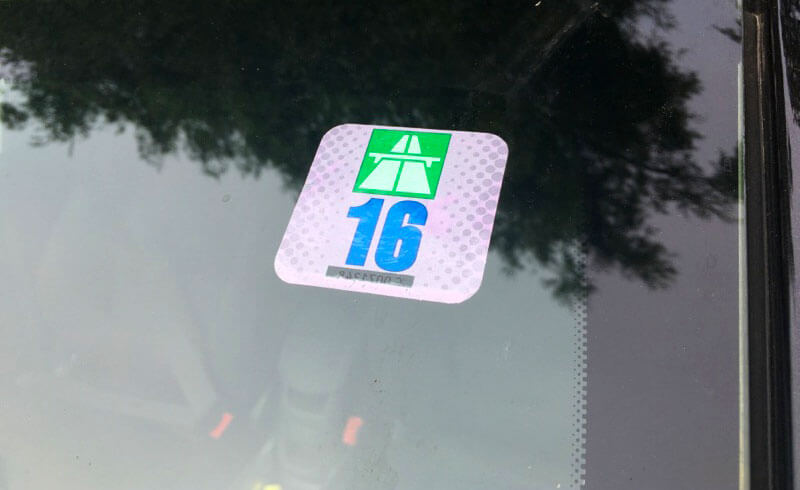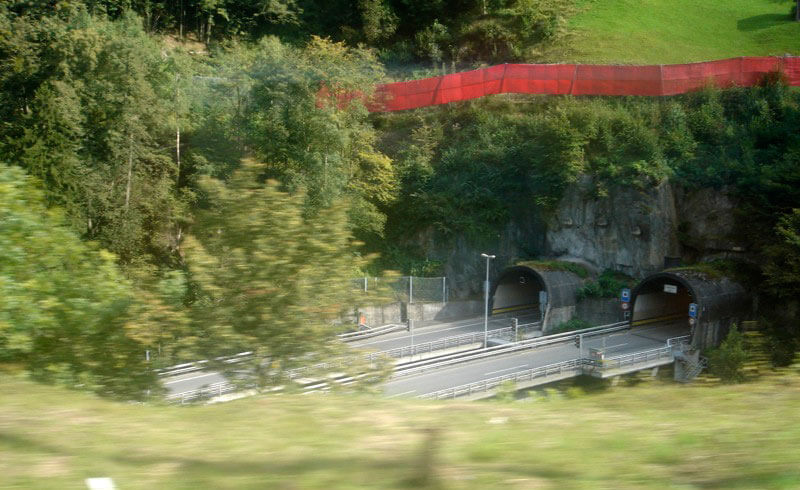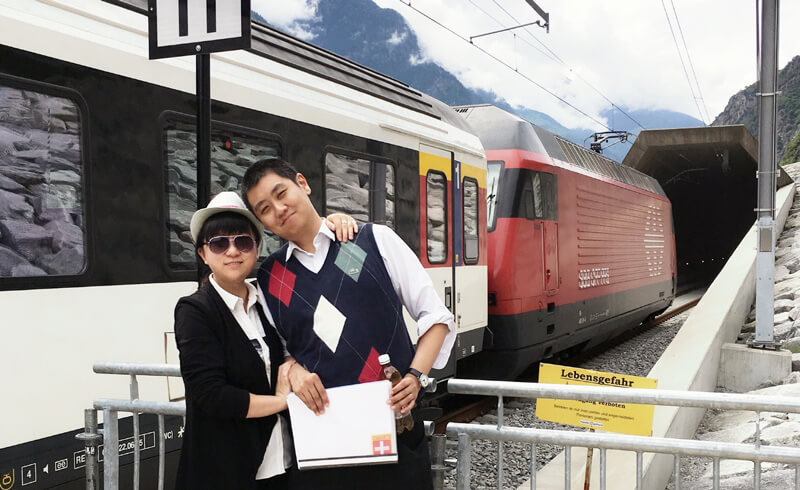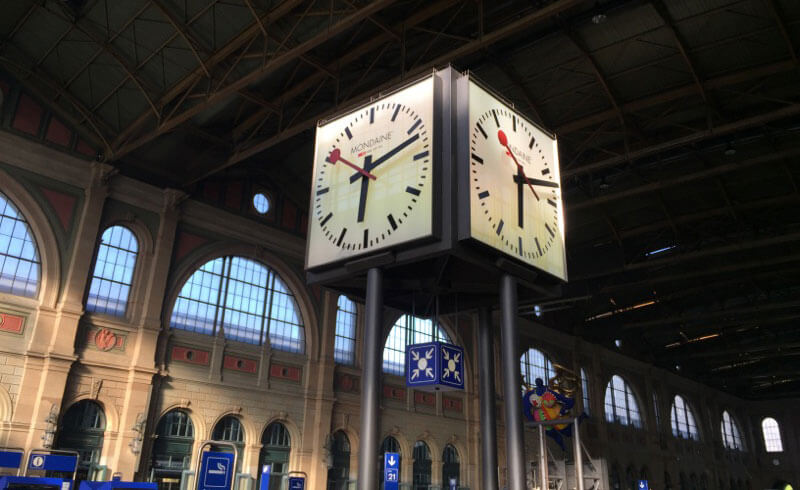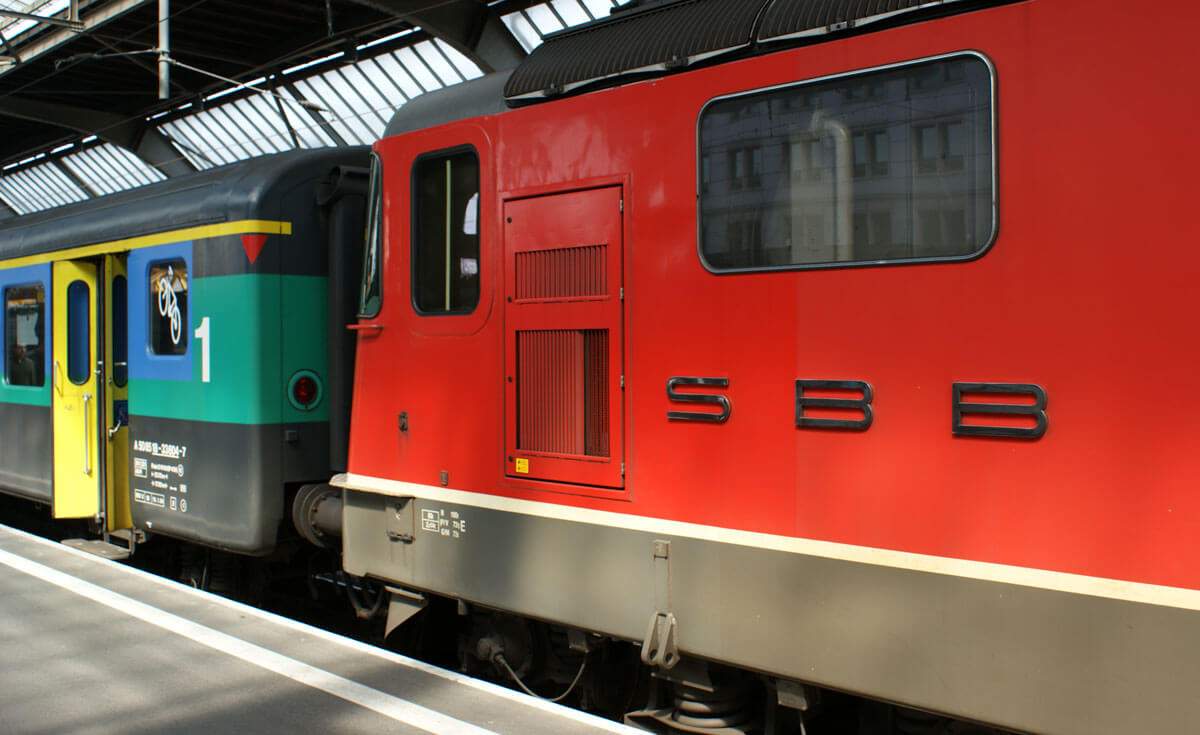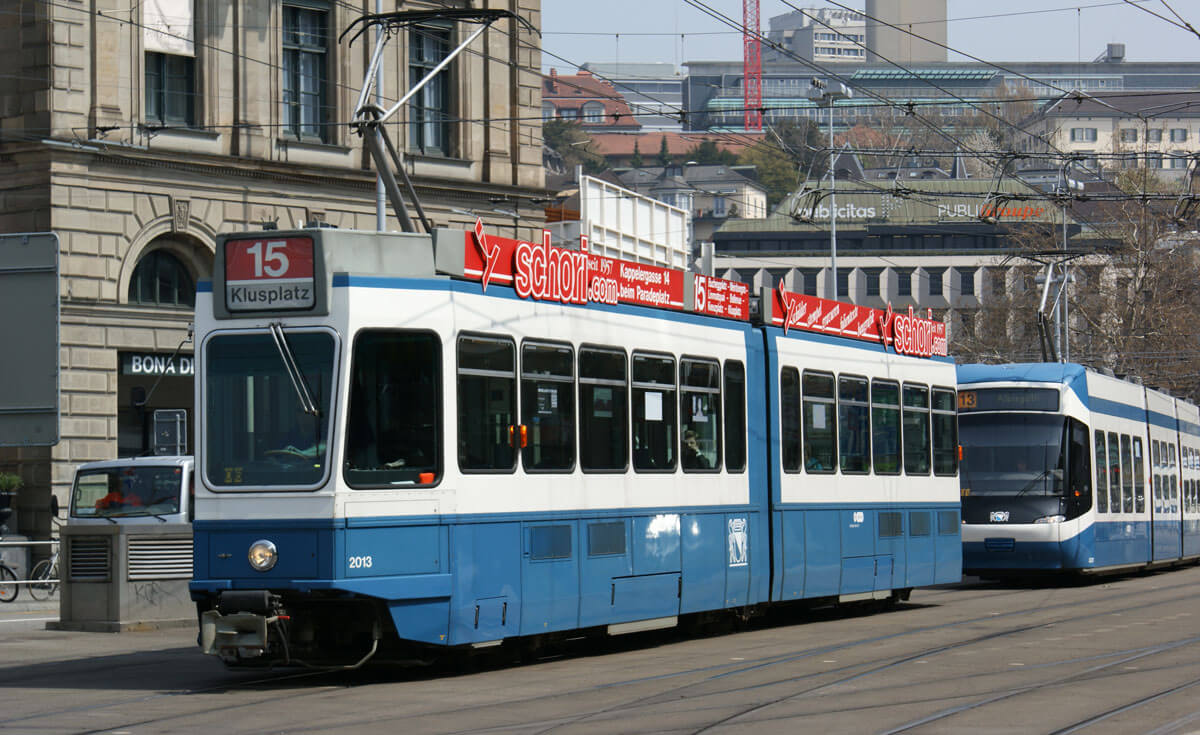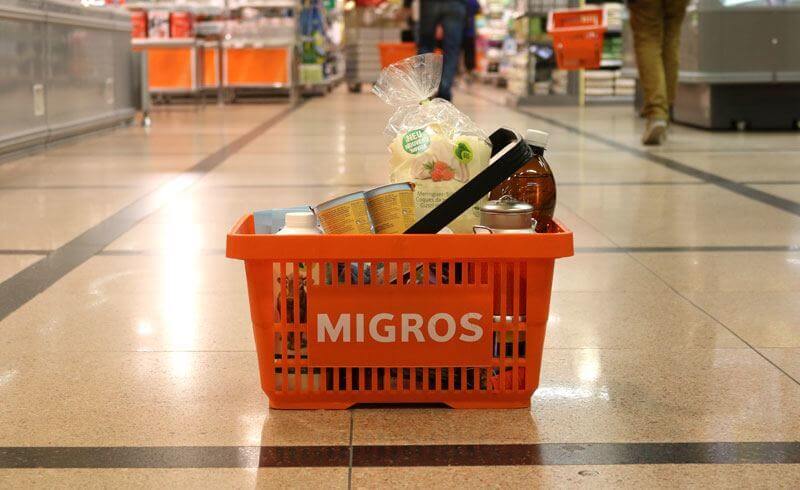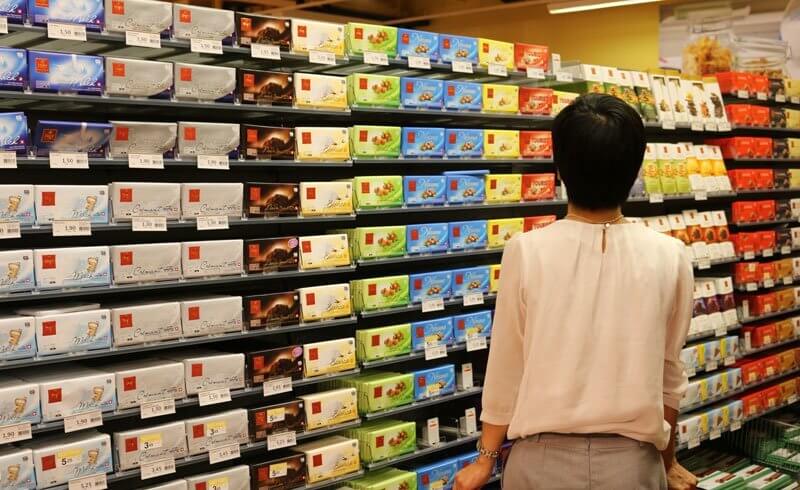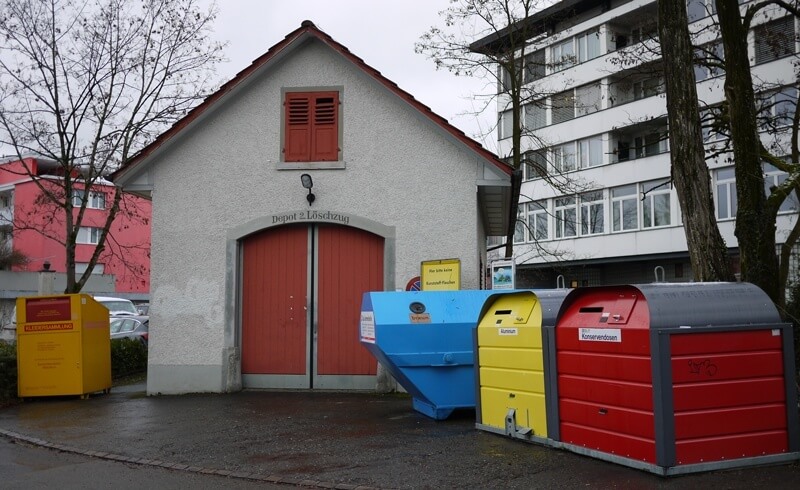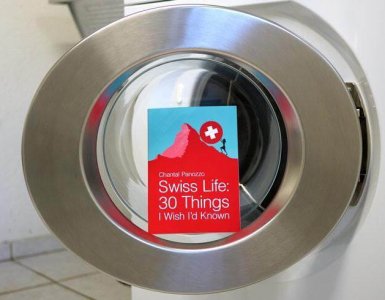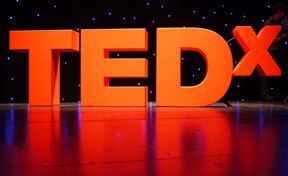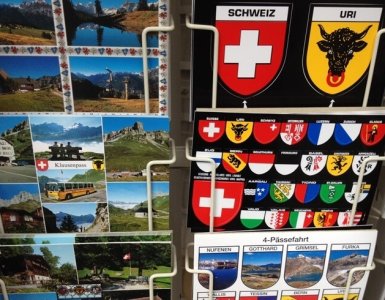Name three typical Swiss things!
If your answer includes cheese, chocolate or watches, you need to read on... Because I have compiled twelve unique things with a profound meaning for Switzerland, including the freeway tax sticker, the iconic Swiss railway clock, or the historic Rütli pasture. Here you go:
Switzerland is a Veloland - a place for bicycle riders.
If you are not exactly a long-distance hiker, there is another well organized network for you to get around Switzerland. The white-on-cinnamon sign posts with the ubiquitous bicycle icon show you how to get from point A to point B by bike. The popular Swiss directory, search.ch, even has a dedicated route planner for bicycles.
The Veloland Schweiz network is truly nationwide, and following a specific route will allow you to move around easily. You can either pick the scenic way, or the recommended route which is often just as scenic. Because Switzerland.
The Swiss national road network with its blue and green street signs.
Drivers of cars enjoy a myriad of road networks, from cobblestone alleys in old towns to major freeways between cities. Streets are well signposted, offering drivers their pick of picturesque country roads (black on white signs), main national highways (white on blue), or freeways and divided highways (white on green).
If, by some misfortune, some part of the road is blocked, information on reroutes and diversions are almost always provided on temporary, black-on-shiny-orange, detour sign. Switzerland Tourism has recently connected some of the most scenic roads in Switzerland as part of the Grand Tour of Switzerland.
The mandatory Swiss freeway "Vignette" seal.
But hold up! Before you speed onto a Swiss freeway, you better make sure your car has a Vignette on the windshield. In 1985, Switzerland was one of the very first countries to require users of the national Autobahn freeways and of divided Autostrasse highways to pay a tax. The confirmation that the road tax of 40 francs per year has been paid is a sticker, or Vignette.
Clear rules apply to the Vignette: The sticker must be fully affixed to the windshield at designated places, and the adhesive must be fully exposed — using even sellotape to "pretend you've affixed it" will land you a meaty fine! It must also be stuck on before you enter the freeway network, although for very short parts around border areas and on some intra-cantonal routes, the tax may not apply.
The notoriously congested A2 freeway.
This very freeway is known to be home of massive jams. They happen either in the shared part with the A1 in northern Switzerland (around Olten). Infamous traffic jams also take place right before the Gotthard road tunnel where two lanes merge into one — because the Constitution mandated it this way. As a result, sometimes surreal jams can suddenly be seen as far away as from the mountains.
Here is a sneaky reroute from North to South: If you do not mind some extra driving time (and much better scenery), divert onto freeway A13. You will cross the Alps using the shorter, and older, San Bernardino tunnel. It is nearly one third the length of the Gotthard Road Tunnel. And yes, at times you will probably be negotiating tougher mountainous terrain, especially in the Ticino part, but you will also steer clear of what must be kilometers of jams before the tunnel on the A2.
The new Gotthard Base tunnel is the world's longest rail tunnel.
Smart travelers who want to cross the Alps are fans of the rail - if only for the SBB ad slogan: Smart people travel by train. But so far, the beautiful classic route is still rather slow and long-winding.
Enter the new, 57 km long Gotthard Base Tunnel, the longest of its kind across the planet. The tunnel will officially open in December 2016 when it will become part of the national railway timetable. At this time and when the Ceneri Base Tunnel becomes reality, travel time between Zürich and Milan will be cut by a full hour.
The iconic Swiss railway clock.
Hans Hilfiker's 1944 classic is unique in that the second hand runs a little too quickly. For each minute, it takes 58.5 seconds where others take the full 60 seconds. The second hand stops for almost two seconds at the top of the minute before continuing - and bringing the minute hand to the next minute.
"Bringing peace and quiet in the last minute," as Hilfiker would say, is a very Swiss way of time-keeping as it allows for trains to be dispatched on time. This unique leap to the next minute, originally conceived to resolve technical issues, remains part of the clock today.
The punctual Swiss train system.
The Swiss railway clock from above is truly one-of-a-kind. And indeed, Hilfiker's masterpiece has paid off because Swiss trains are among the most efficient and timely in the world.
Trains are the epic classics of the country, right up there with cheese and chocolate. In Switzerland, trains are used for passenger and cargo transportation. The SBB CFF FFS trains are nationwide while there are many private rail networks such as the GoldenPass line or the Rhaetische Bahn. Trains are popular among tourists, too. Because who would not like to view the mountains from a first class panoramic car or a double deck dining wagon?
Trams are a common sight in towns and cities.
Zürich almost, almost, had a citywide metro system. (Few people know that some sections that were built for testing purposes still exist today, such as the tunnel on the #7 tram between Milchbuck and Schwammendingen.)
The only Swiss city with a proper metro system is Lausanne. For all other cities, the venerable trams are still alive and very much in action.
Migros and Coop, the two main grocery chains.
You are going to be asked this question once you have settled in Switzerland: "Are you a Migros person or a Coop person?" Coop is much more visible than, say, the Co-operative of the UK. And Migros now has its tentacles on pretty much everything - from budget pencils and groceries to high-end tech appliances, language schools, and gas stations (Coop has some of these as well).
It is not that a Migros person never visits Coop - but it is more than likely that once you stick to a brand, visiting that grocer will become "second nature" to you. Yours truly is a Migros person, but I do not mind the occasional visit to Coop...
Swiss + Chocolate
Note the "plus" symbol: Swiss International Air Lines is Swiss in every way - especially when it comes to the chocolate, which is given to all passengers. Even those traveling on hand luggage-only fares in Economy Class will be allowed to grab a piece of Swiss milk chocolate!
The flag carrier has had some pretty scary moments. This was most noticeably the case in 2001 when its predecessor, Swissair, was grounded. Since then, the airline has more than bounced back and remains a familiar and much relied upon brand under the "wings" of Lufthansa. Getting a piece of Swiss chocolate before debarking is certainly a big plus!
For the best chocolate experience in Switzerland, head to the "Chocolate Wall" at any Swiss supermarket. Not only is store brand chocolate affordable, the sheer amount of tastes, shapes and sizes is overwhelming.
Recycling is a national obsession.
What do you do with that chocolate wrapper after you are done with it? You throw it away - but then you also recycle it!
Over half of all waste being produced in the country ends up recycled. The initiative is certainly there: Household rubbish must be placed in a specially designated rubbish bag which comes with a pretty visible waste collection tax. (Placing it in any other bag will not mean the end of the world - it only means that your trash bag will not be collected or worse yet, it might get searched for information on the non compliant litterer.)
PET bottles are often flattened in order to make room for more. Glass bottles are separated by color and placed in different containers. And newspapers end up in the Altpapier, the paper and cardboard recycling system. Unless you are running a small hotel, it is rare to throw away 110 liters of waste on a regular basis. Trash is recycled at amazing rates across the country.
Rütli is a legendary place that some would argue has historic significance.
Finally, here is the reason for Switzerland in the first place: The place where the Swiss Confederation was born. Also, the Rütli is the reason why Switzerland is celebrating its national day.
"We want to be a single People of brethren, never to part in danger nor distress." This line is part of Friedrich Schiller's 1804 play of William Tell, describing the most famous version of the oath which three men took in Altdorf. There is a promise to meet again, on the Rütli meadow, on August 1. The legendary Rütlischwur oath of the Old Swiss Confederacy is said to have taken place on that picturesque meadow above Lake Uri.
Due to its symbolic importance, General Guisan decided to reunite all commanding officers of the Swiss army there during World War II. "The survival of Switzerland is at stake." This noted Rütlirapport made it clear that Switzerland would never surrender if invaded.
The significance of this place, admittedly, is probably "less spectacular" than other national signs of independence or similar political landmarks. However, it remains of visible significance to the Swiss. The boat station has the three cantonal emblems of the Urkantonen, or Switzerland's initial three cantons: Uri, Schwyz, and Unterwalden (which is now Nidwalden and Obwalden).
13 more typically Swiss things other than chocolate or watches

